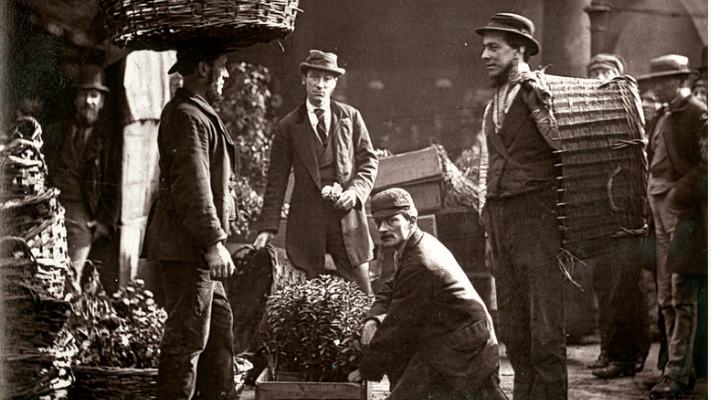How has racial health inequality changed as disease burdens altered over the twentieth century? LSE PhD student Nick Fitzhenry is investigating population health outcomes in South Africa’s largest cities during the period of Apartheid. His work, presented at the 2023 EHS Conference, reveals the presence of large health inequalities between 1924 and 1958, as well as transformative changes in the mortality profile of different racial groups.
Over the 20th century, the rate of deaths from infectious diseases fell sharply in South Africa — mirroring improvements in Europe and America during the last phase of what public health scholars term the ‘epidemiological transition’. However, there is little research on whether this took place uniformly across the regions of South Africa, and whether the timing and rate of the decline were the same for different racial groups. Because of this, we do not know how much gains in life expectancy that came from improving (but racially unequal) incomes, medical innovations and public health access were stymied by the imposition of apartheid and the intensification of urban residential segregation that affected South Africa in the middle of the 20th century.
To uncover hidden patterns of mortality decline, I use vital statistics and census data for the nine largest cities in the South Africa, from 1920 to 1959: Cape Town, Port-Elizabeth, East London, Kimberly, Pietermaritzburg, Durban, Pretoria, Johannesburg, and Bloemfontein. I calculate the crude mortality rate (CMR) and infant mortality rate (IMR) disaggregated by race for the nine cities for the first time. I look just at cities to ensure a like-with-like comparison, to separate differences in urbanisation rates from other regional differences. This focus on cities also improves measurement accuracy, as registration of vital events was more reliable in urban areas.
South Africa had four legally defined racial groups:
1 Black individuals, the majority race group composed of multiple ethnic groups whose ancestors settled in Southern Africa from at least the 3rd century AD.
2 White individuals, predominantly descendants of Dutch, British and Irish immigrants;
3 Indian individuals, with ancestry from South Asia, the majority being descendants of indentured labourers who immigrated to the colony of Natal in the late 19th century;
4 Coloured individuals, the race group assigned to the multiracial ethnic communities most highly concentrated within the former Cape Colony;
A major limitation of using the official vital statistics is that only three of the four legally defined race groups had death registration rates of reliable quality included in the official vital statistics. I can estimate mortality trends for the White, Indian, and Coloured populations. Unfortunately, I lack data for the majority Black population, whose vital information was not adequately registered at the time. However, a comparison between the three groups allows for at least a partial insight into the country’s long-run racial health inequalities.
Mortality trends by racial group
Health outcomes varied greatly between racial groups in South Africa. The Coloured population had a higher (i.e. worse) Crude Mortality Rate and Infant Mortality Rate than the White or Indian population over the period. In the 1930s, the Coloured population’s Infant Mortality Rate was at a similar level to that of England and Wales a century earlier, in the mid-1800s.
Even worse, the Coloured population’s Crude Mortality Rate between 1924 and 1944 was comparable to that seen in England and Wales in the late 1700s. The higher volatility in the Coloured population’s CMR also suggests the population was more susceptible to outbreaks of infectious diseases, although this may also be due to poorer quality registration. Mortality conditions for the Coloured population only began improving from the mid-1940s.
By contrast, the White population’s Crude Mortality Rate and Infant Mortality Rate were already at a considerably lower (i.e. better) level than the other groups at the start of the period for which we have data. The downward trend in the White population’s Infant Mortality Rate is comparable to the contemporary IMR experienced in England and Wales. The Crude Mortality Rate of the White population over the period remains stable and low.
In fact, White South African’s had a lower Crude Mortality Rate than England and Wales in the same period. Because these figures compare an urban South African population with a national UK population, this underestimates the overall mortality advantage of White South Africans over the UK, since the White and rural South African population had even lower mortality rates.
Mortality rates for the Coloured and Indian urban populations were considerably higher than for the white population, but they were also more dynamic. The Indian population experienced a striking, sudden increase in mortality during the wartime years of 1942-1944. The city of Durban around this time experienced outbreaks of gastrointestinal diseases, which had a devastating effect on the city’s relatively large Indian community. A steady decline in the Crude Mortality Rate followed, however, resulting in the convergence of the White and Indian mortality rates by 1953.
Developing an account of South Africa’s mortality transition
Historical health reports in these cities suggests that the decline in the CMR resulted from the declining rate of respiratory and waterborne disease mortality in the Coloured and Indian urban populations. The decline coincides with advances in the treatment of tuberculosis using streptomycin and chemotherapy that occurred in the mid-1950s. But this can only partially explain the improvement. The next step of my research will be to determine that these trends indeed reflect actual changes in the urban mortality profile, and not just the forced removals of population groups outside of the cities’ registration boundaries during Apartheid. Following this, I will use official medical health reports of each city to ascribe the mortality rates by cause of death, allowing me to begin to identify what epidemiological developments might explain mortality inequality and change.
Click on the poster image to enlarge.
 Nick Fitzhenry, Department of Economic History, LSE
Nick Fitzhenry, Department of Economic History, LSE




